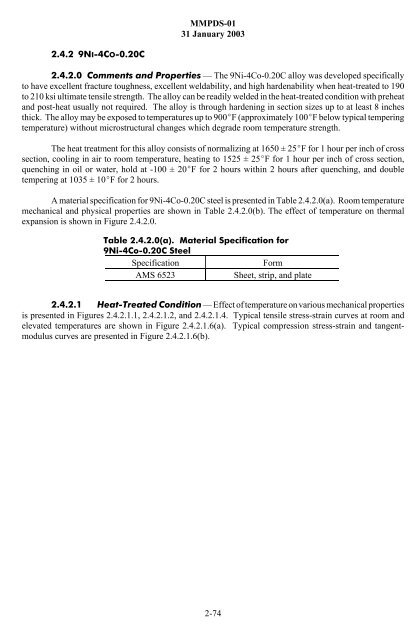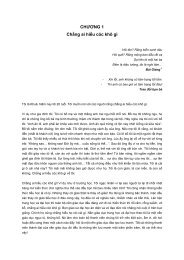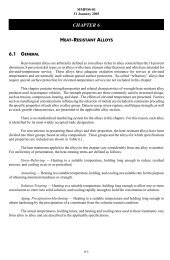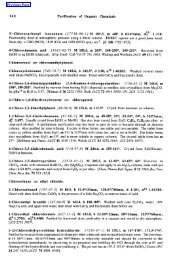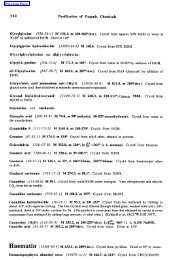steel - Nouvelle page 1 - Free
steel - Nouvelle page 1 - Free
steel - Nouvelle page 1 - Free
You also want an ePaper? Increase the reach of your titles
YUMPU automatically turns print PDFs into web optimized ePapers that Google loves.
MMPDS-01<br />
31 January 2003<br />
2.4.2 9NI-4CO-0.20C<br />
2.4.2.0 Comments and Properties — The 9Ni-4Co-0.20C alloy was developed specifically<br />
to have excellent fracture toughness, excellent weldability, and high hardenability when heat-treated to 190<br />
to 210 ksi ultimate tensile strength. The alloy can be readily welded in the heat-treated condition with preheat<br />
and post-heat usually not required. The alloy is through hardening in section sizes up to at least 8 inches<br />
thick. The alloy may be exposed to temperatures up to 900EF (approximately 100EF below typical tempering<br />
temperature) without microstructural changes which degrade room temperature strength.<br />
The heat treatment for this alloy consists of normalizing at 1650 ± 25EF for 1 hour per inch of cross<br />
section, cooling in air to room temperature, heating to 1525 ± 25EF for 1 hour per inch of cross section,<br />
quenching in oil or water, hold at -100 ± 20EF for 2 hours within 2 hours after quenching, and double<br />
tempering at 1035 ± 10EF for 2 hours.<br />
A material specification for 9Ni-4Co-0.20C <strong>steel</strong> is presented in Table 2.4.2.0(a). Room temperature<br />
mechanical and physical properties are shown in Table 2.4.2.0(b). The effect of temperature on thermal<br />
expansion is shown in Figure 2.4.2.0.<br />
Table 2.4.2.0(a). Material Specification for<br />
9Ni-4Co-0.20C Steel<br />
Specification<br />
Form<br />
AMS 6523<br />
Sheet, strip, and plate<br />
2.4.2.1 Heat-Treated Condition — Effect of temperature on various mechanical properties<br />
is presented in Figures 2.4.2.1.1, 2.4.2.1.2, and 2.4.2.1.4. Typical tensile stress-strain curves at room and<br />
elevated temperatures are shown in Figure 2.4.2.1.6(a). Typical compression stress-strain and tangentmodulus<br />
curves are presented in Figure 2.4.2.1.6(b).<br />
2-74


